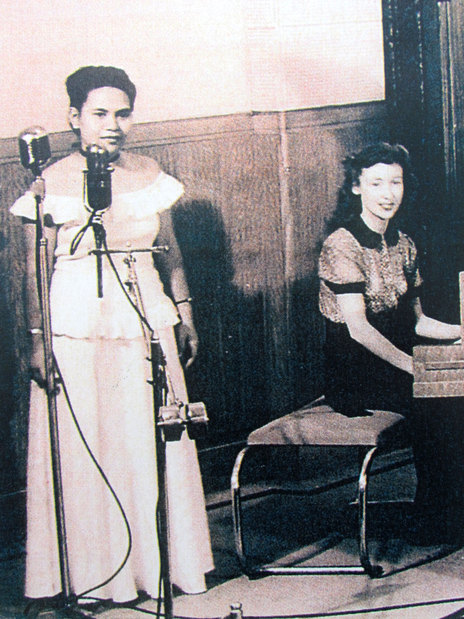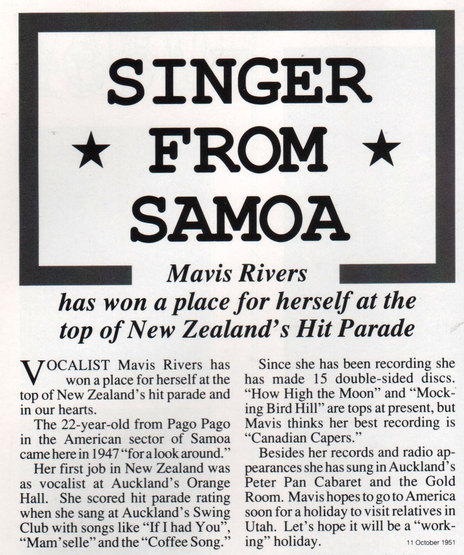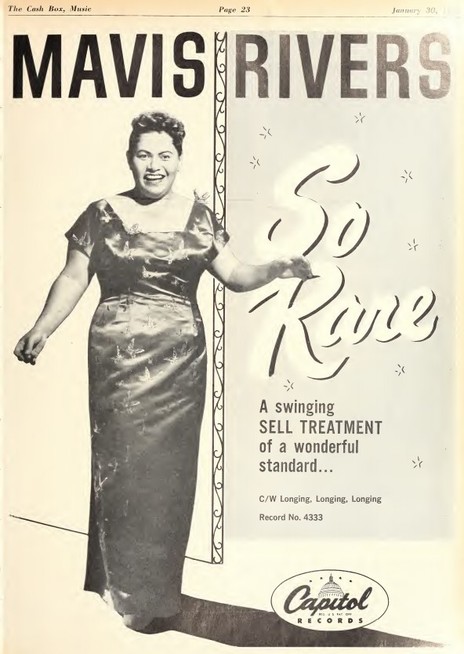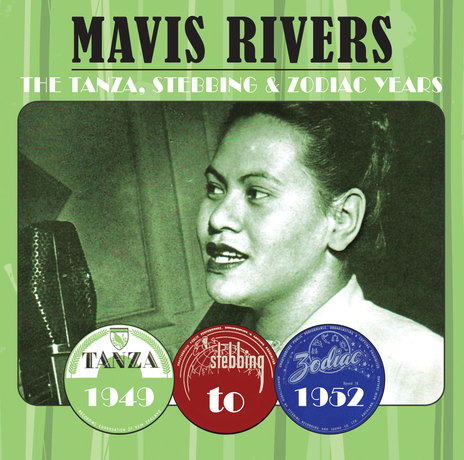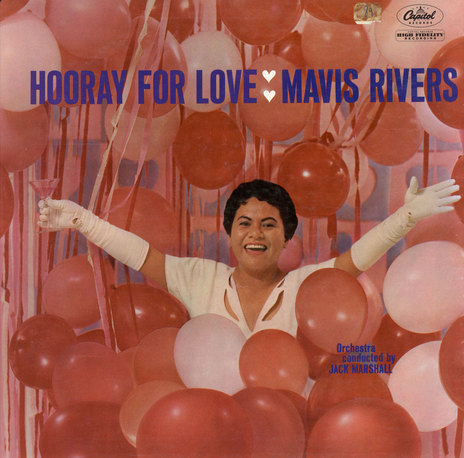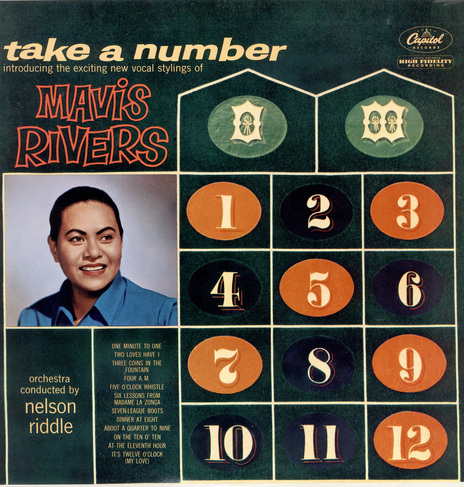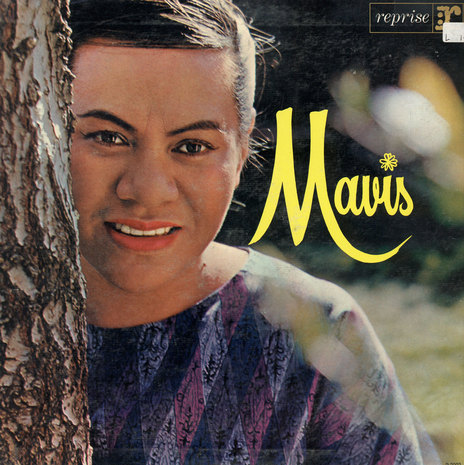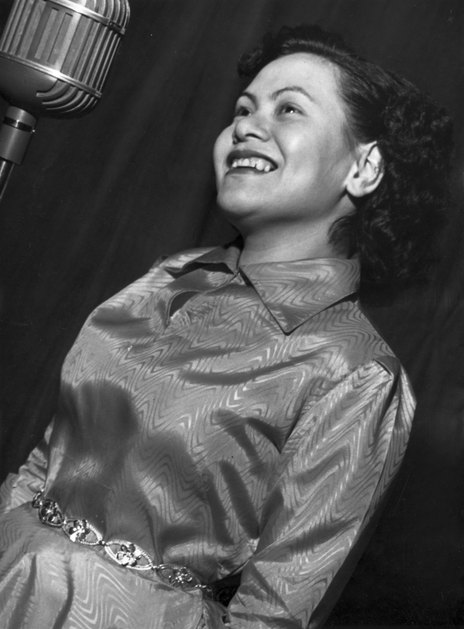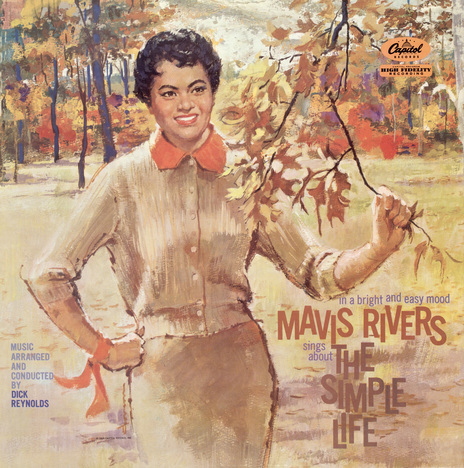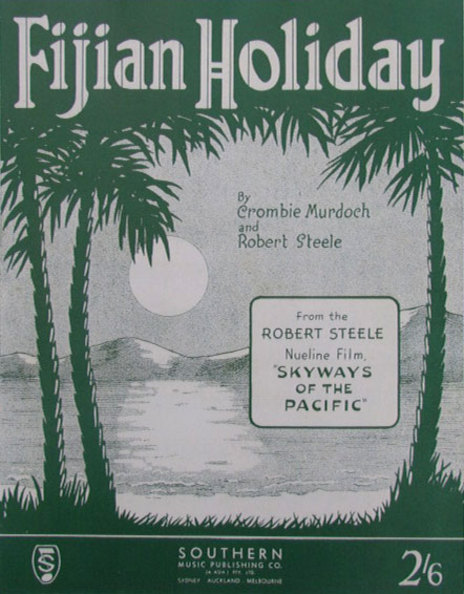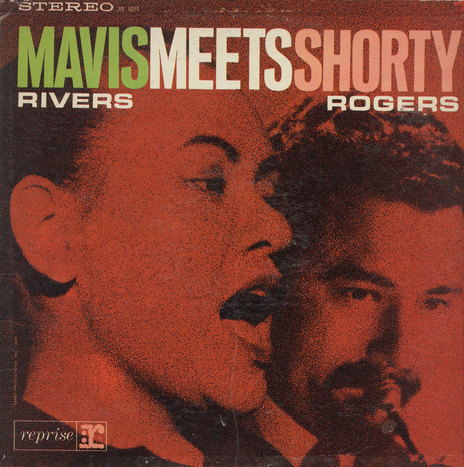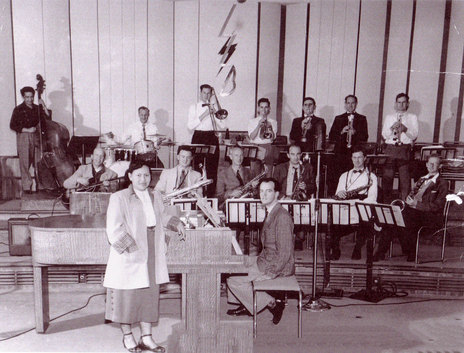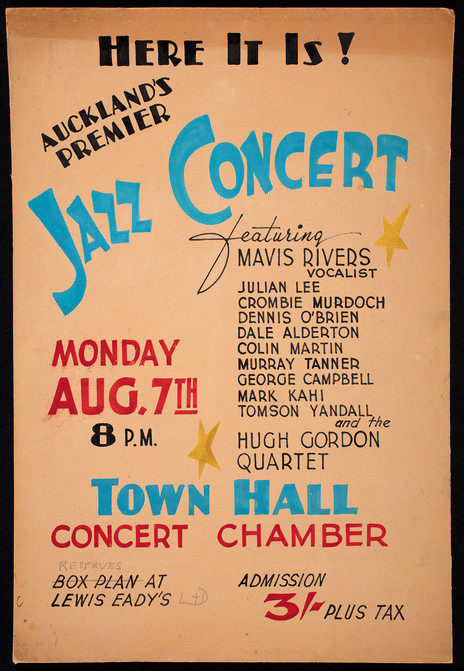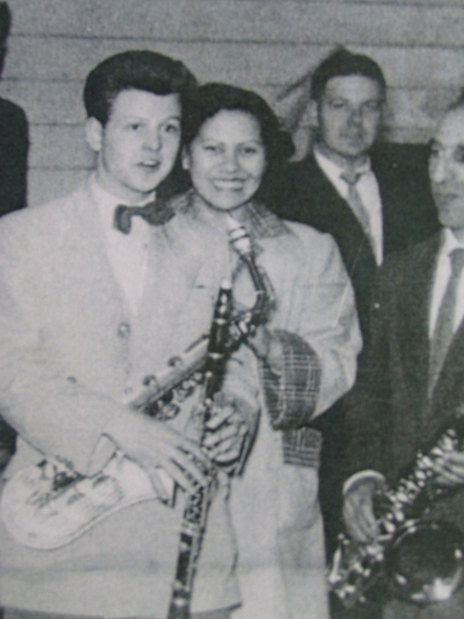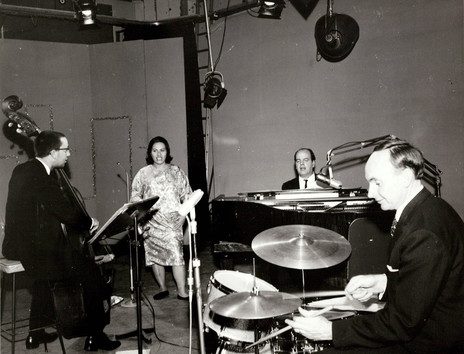Rivers was born in Apia, Western Samoa, in 1929. Her parents Moody and Louisa Rivers had 13 children, most of whom were musical. They began performing as a family on the local radio station, and during World War II, Rivers sang with her father’s jazz band for US servicemen at Pago Pago, American Samoa.
In 1947 the family moved to Auckland, where Rivers began working as a stenographer at the Farmers’ Trading Company. The guitarist Tommy Kahi heard her singing with a Mormon choir, and asked her to appear at a jazz concert he was organising. His band – which included leading local jazz players Frank Gibson, Derek Heine and George Campbell – were very impressed by her performance, especially her rendition of ‘How High the Moon’.
Soon, Rivers was in demand at Auckland venues such as the Peter Pan cabaret and the Orange Ballroom, on radio broadcasts and recording jingles. In 1949 her first 78rpm disc was released on Tanza, ‘Someone Like You’ (backed with ‘I’ll String Along With You’). Nearly 20 others would follow, as well as several for Stebbing and Zodiac. Tanza’s recording engineer in Auckland, Noel Peach, told the Listener in 1959, “Mavis was a wonderful little trouper, and she could accept direction when necessary – not that she needed teaching, for she was a born singer.” She recorded in a wide variety of styles: novelties, lush ballads, jazz standards, Polynesian-style pop, and several discs with her siblings Natalie, Mitzi and Sally, billed as the Rivers Sisters. Other collaborators included Julian Lee, Crombie Murdoch, Bill Wolfgramm, the Knaves and Nancy Harrie. In 1950, Duke Ellington’s former trumpeter Rex Stewart, visiting Auckland, sat in on a recording session for ‘I’m in the Mood for Love’.
Rivers was only involved in the Auckland music scene for six years, but it was a pivotal period for her career. A highlight was the evening she spent as the star vocalist at the August 1950 jazz concert held at the Auckland Town Hall Concert Chamber; among the musicians backing her were Lee and Murdoch. “The thing that always struck us about her was her natural musical ability and perfect diction,” Murdoch recalled in 1959.
She moved to the US in 1953 to study at the Brigham Young University in Utah (New Zealand newspapers said she was going to join the Mormon Tabernacle Choir). After her student visa expired, she returned to American Samoa for six months. By January 1955, she was back in the US, living in Los Angeles and looking for work. She joined a Hawaiian quartet, fronted by a virtuoso ukulele player called Johnny Ukulele; she would later marry the bassist, David Catingub.
In 1962, having received plenty of acclaim but no hits, she parted company with Capitol and was signed by Frank Sinatra to his new label, Reprise.
Rivers was signed by Capitol Records in 1958, and made three albums for the label, the first of which, Take a Number, was arranged and produced by the legendary Nelson Riddle. Its title reflected the numerical theme: the 12 songs went, in order, from ‘One Minute to One’ to ‘It’s Twelve O’Clock (My Love)’. Her other Capitol albums were Hooray for Love (1959) and The Simple Life (1960).
In 1962, having received plenty of acclaim but no hits, she parted company with Capitol and was signed by Frank Sinatra to his new label, Reprise. “At the very beginning I was the only girl,” she recalled in 1990. “There was Sammy, Frank and me. I stayed with them until they merged with Warner in the late 60s. Made a lot of singles. What fun.” She also performed often on the cabaret and casino circuit, including Sinatra’s Cal Neva Lodge, Lake Tahoe.
After the album We Remember Mildred Bailey (Veejay, 1965) Rivers concentrated on live work – including the Newport Jazz Festival in 1969, with Red Norvo’s group – and television appearances, returning to New Zealand occasionally for family visits and concerts. She began recording again in the early 1980s, appearing on several albums by her son, the arranger and saxophonist Matt Catingub, and releasing a solo album in 1983, It’s A Good Day (Delos).
Her last appearances in New Zealand were in 1990, when she performed at the International Festival of the Arts in Wellington and at a jazz festival in Auckland. She liked to have Matt Catingub at the piano, leading the band. “I’m comfortable with others, but we seem to be one,” she said in 1990. “It sounds corny. But I can look at him and he knows what I’m thinking. I can change keys in the middle of something, or go out on a limb, and he’s right there.”
Throughout her career, Rivers fended off the many complimentary comparisons to Ella Fitzgerald and others. “I guess I’m up there with the Sarahs, Ellas and Carmens. At least, that’s what they tell me.” But, she said, the best thing to happen to a singer is when people stop saying you sound like someone else. “After a while you want them to say, ‘Do you know that singer? I think she’s been listening to you.’”
